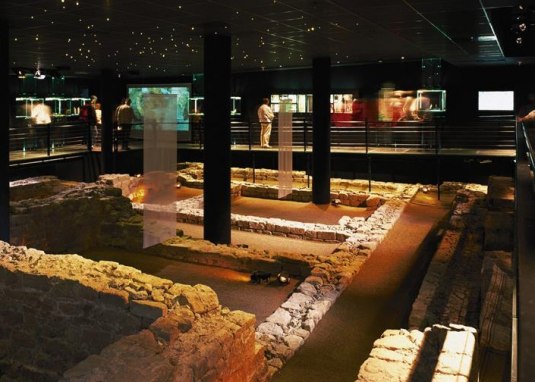In the year 2000, parts of a temple dedicated to the ancient Egyptian goddess Isis and the Oriental Mater Magna were discovered, which was presumably used until the 3rd century. This has enabled a sensational insight into the religious cults of the Roman period.
Remarkable alongside the more than 300 oil lamps found around the temple are the uncovered offerings: alongside fruits like dates and figs, pine nuts and grains were burned on altars. Animal sacrifices were also made, as countless chicken bones attest. Among the recovered statuettes are a closely entwined couple, a Venus, a bull with a sacrificial ribbon, and a bronze Mercury holding a money bag in his hand.
The foundations of the Roman sanctuary of the Isis and Mater Magna temple were discovered during excavation work for a shopping arcade. Walls, stones, and artifacts were carefully stored for three years. In 2003, the temple was presented in the exhibition space of the "Taberna archaeologica" at its original location.
Visitors can expect an immersive presentation of the sanctuary on their journey back into the world of cultic Rome, engaging all senses. The site is presented by the Initiative Roman Mainz (IRM).

